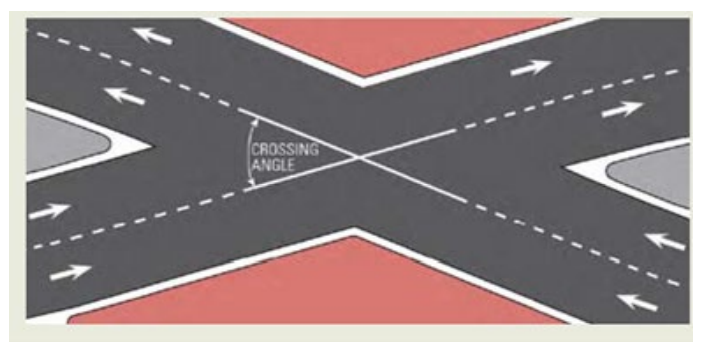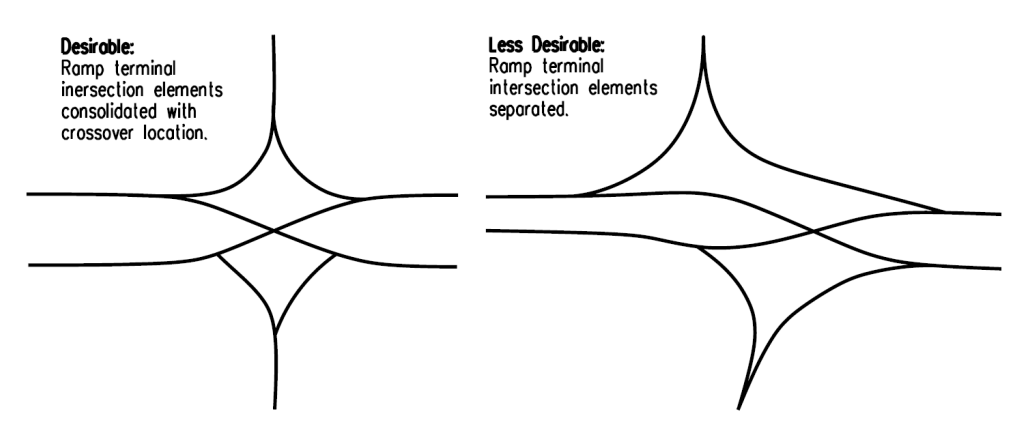14.10.2 Design Considerations
Development of functional geometrics are central to safe and efficient operation of a DDI. The most common design vehicle used at DDI facilities is the WB-67. In more urbanized areas, it may be appropriate to use smaller design vehicles, such as the WB-62TX or WB40. The anticipated truck movements, staying in-lane through the DDI, should be determined and AutoTURN (or a similar tool) used to assess vehicle encroachments within the DDI. The largest truck movements may be accommodated by using a roll down curb in turning areas. The design speed of the DDI affects the reverse curve radii through the two intersection crossovers and should typically range from 25 to 35 mph (
and
for corresponding curve radii values). The DDI profile should be relatively flat to increase driver sight distance. A tangent section is recommended before and after the crossovers to minimize the likelihood of wrong way maneuvers into opposing lanes, and the recommended crossover angle is 40-50 degrees or greater (see
and
). A consolidated ramp terminal intersection with crossover is desired over separated ramp terminal intersection elements (see
).

Figure 14-40: Tangent Length Approaching and Departing the Crossover
Source: FHWA DDI Informational Guide
Curve radii approaching and following the DDI crossover generally range from 150-ft to 300-ft. At the crossover, the greater the crossing angle, the less “different” the intersection will seem. FHWA’s Intersection and Interchange Geometrics (IIG) Workshop, May 2016, recommends a crossover angle of 40 to 50 degrees. The 2016 IIG Workshop also noted the following regarding low crossover angles:
- Low crossover angles may increase the likelihood for wrong-way maneuvers into the opposing lanes; and
- Low angles increase distances and increase signal clearance time.

Figure 14-41: DDI Crossover Geometry (Crossing Angle)
Source: FHWA Intersection and Interchange Geometrics (IIG) Workshop (May 2016)

Figure 14-42: Consolidating the Ramp Terminal Intersection
Source: FHWA DDI Informational Guide